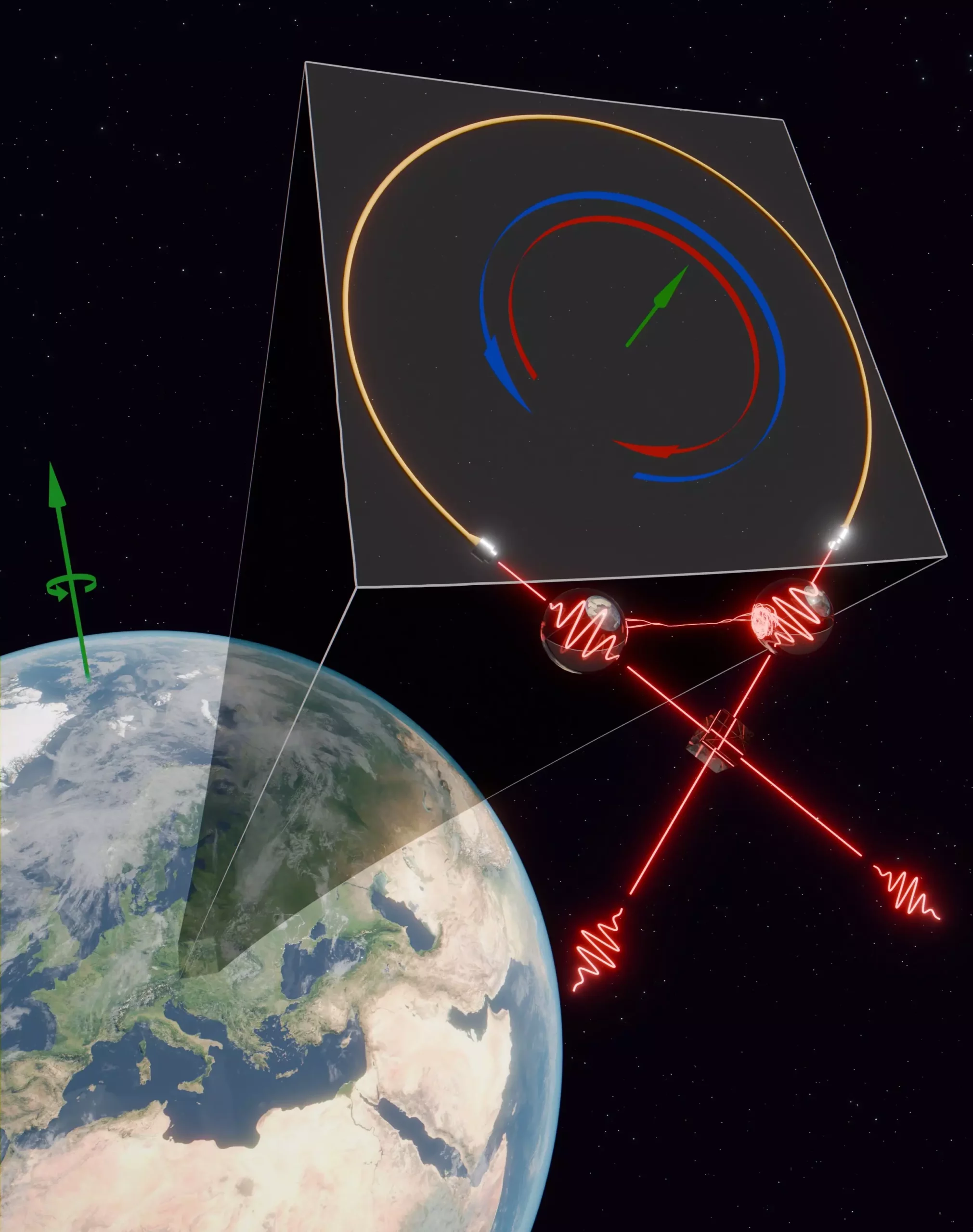In a groundbreaking experiment led by Philip Walther at the University of Vienna, researchers have successfully measured the effect of Earth’s rotation on quantum entangled photons. This experiment, published in Science Advances, marks a significant achievement that pushes the boundaries of rotation sensitivity in entanglement-based sensors. By utilizing optical Sagnac interferometers and quantum entanglement, the researchers have paved the way for further exploration at the intersection of quantum mechanics and general relativity.
Optical Sagnac interferometers have long been recognized as the most sensitive devices for measuring rotations. Since the early 20th century, interferometers have played a crucial role in our understanding of fundamental physics, contributing to the development of Einstein’s special theory of relativity. Their unparalleled precision has made them the ultimate tool for measuring rotational speeds within the boundaries of classical physics.
Entanglement-based sensors have the potential to break the limitations of classical interferometers by utilizing quantum entanglement. When particles are entangled, the overall state is known, while the individual states remain undetermined until measurement. This unique property allows for more information to be extracted per measurement compared to traditional methods. However, the delicate nature of entanglement has hindered the promised sensitivity improvement until now.
The Vienna experiment led by Philip Walther and his team involved building a giant optical fiber Sagnac interferometer with low and stable noise levels for several hours. This enabled the detection of high-quality entangled photon pairs, outperforming the rotation precision of previous quantum optical Sagnac interferometers by a thousand times. The experiment involved two entangled photons traveling inside a 2-kilometer-long optical fiber wound onto a large coil, creating an interferometer with an effective area of over 700 square meters.
One of the significant challenges faced by the researchers was isolating and extracting Earth’s steady rotation signal. To address this issue, the team devised a unique workaround by splitting the optical fiber into two equal-length coils and connecting them via an optical switch. By toggling the switch on and off, the researchers could effectively cancel the rotation signal at will, extending the stability of their apparatus. This innovative approach allowed them to trick the light into perceiving a non-rotating universe.
The experiment conducted as part of the research network TURIS hosted by the University of Vienna and the Austrian Academy of Sciences successfully observed the effect of Earth’s rotation on a maximally entangled two-photon state. This observation confirms the interaction between rotating reference systems and quantum entanglement, aligning with Einstein’s special theory of relativity and quantum mechanics. The precision improvement of a thousand-fold compared to previous experiments represents a significant milestone in the field.
The results of the experiment and the methodology employed by the researchers are expected to lay the groundwork for further improvements in the rotation sensitivity of entanglement-based sensors. This breakthrough could open the door for future experiments exploring the behavior of quantum entanglement within the context of spacetime curves. With the potential for enhanced rotation sensitivity, the field of quantum optics is poised for exciting new discoveries and advancements in the near future.


Leave a Reply